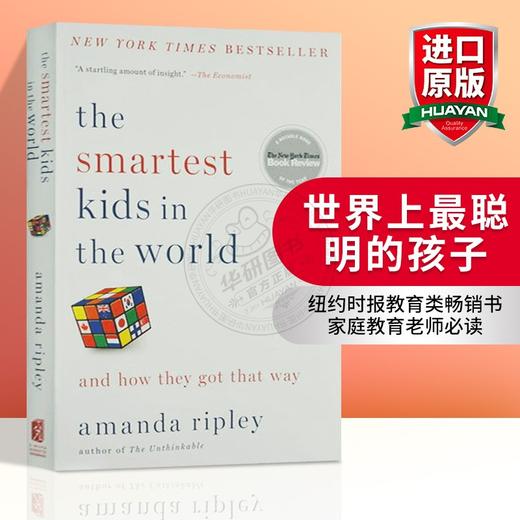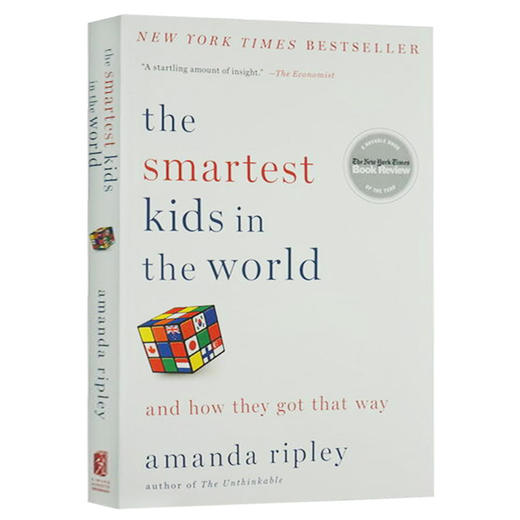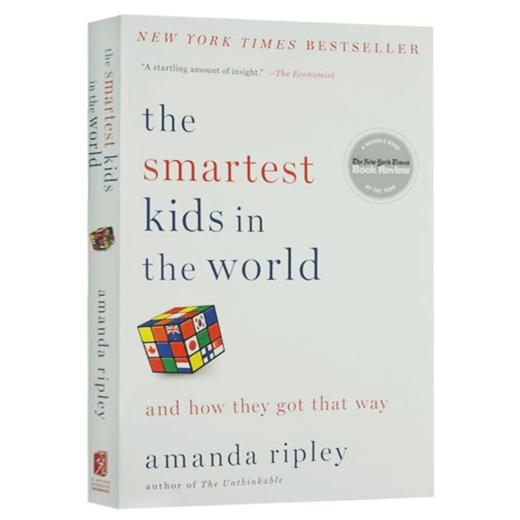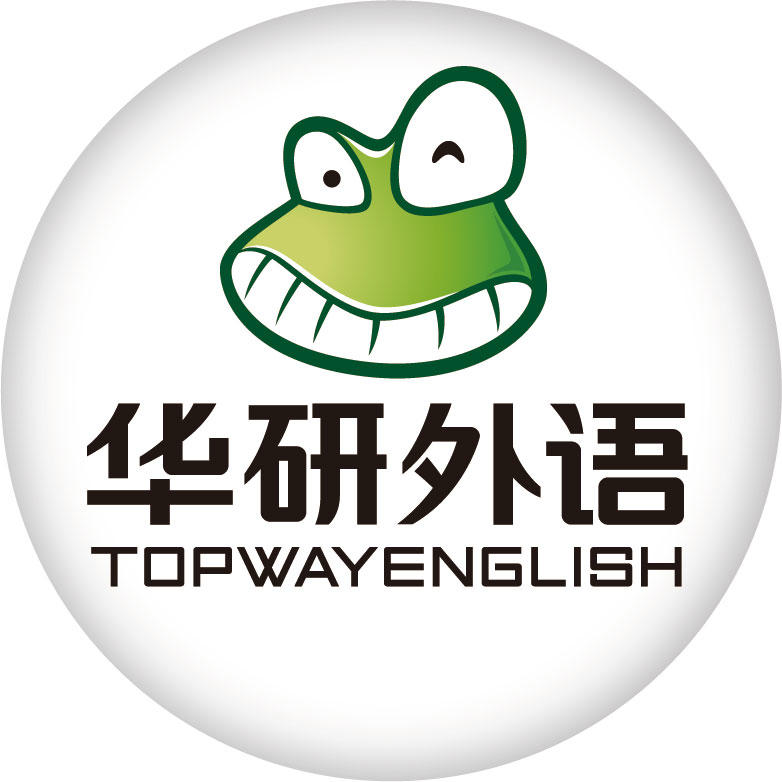世界上最聪明的孩子 英文原版 The Smartest Kids in the World 全英文版 家庭教育英语书 儿童教育 进口育儿经典书籍
| 运费: | ¥ 0.00-999.00 |
| 库存: | 33 件 |
商品详情
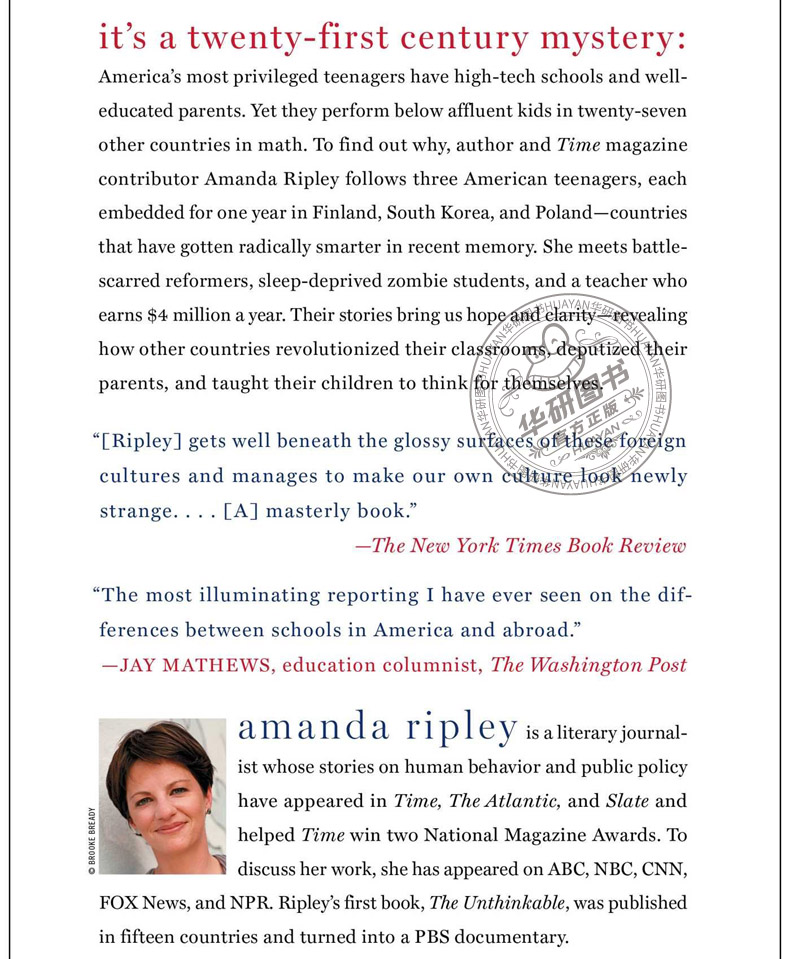


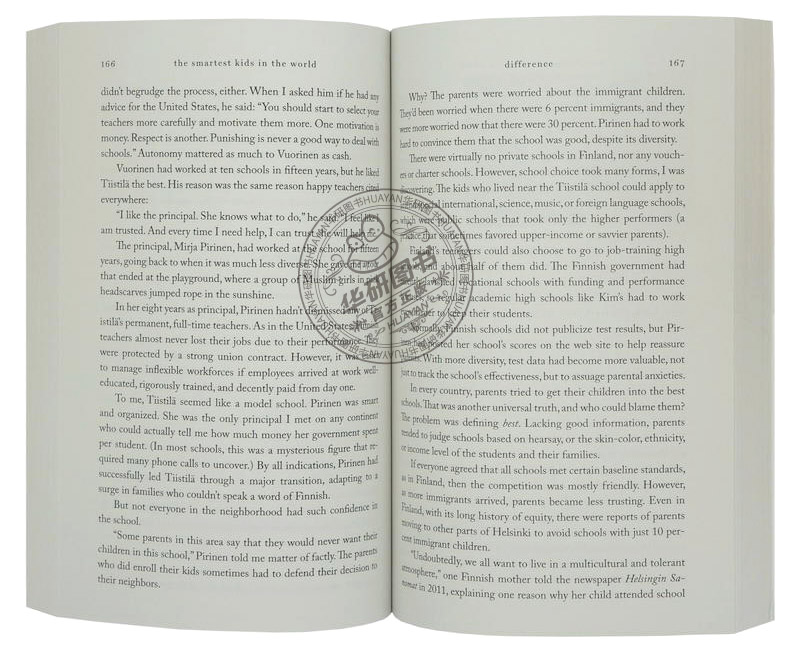

书名:The Smartest Kids in the World 世界上最聪明的孩子
作者:Amanda Ripley阿曼达·里普利
出版社名称:Simon & Schuster
出版时间:2014
语种:英文
ISBN:9781451654431
商品尺寸:14 x 1.9 x 21.3 cm
包装:平装
页数:306

我们知道的越多就越能引导孩子走上成功之路。
The Smartest Kids in the World《世界上最聪明的孩子》是一本震撼美国教育界的书,在美国家长中疯狂传阅。《纽约时报》2014年度推荐,高居美国亚马逊教育类书籍榜首!
美国教育是世界排名首位吗?《世界上最聪明的孩子》一书作者通过实践考察,提出了不同的观点。书中,作者还结合三个美国交换生的所见所闻,对美国、芬兰、韩国和波兰这四国不同的教育理念、体系进行了深刻剖析。它告诉读者:如果能向书中那些教育强国学习,完全有可能培养出更聪明的孩子。
The Smartest Kids in the World《世界上最聪明的孩子》为中国家长、老师和其他教育工作者提供全球化视野,为中国家庭和学校提供有益的借鉴。
New York Time Bestseller
It’s a twenty-first century mystery:
America's most privileged teenagers have high-tech schools and well-educated parents. Yet they perform below affluent kids in twenty-seven other countries in math. To find out why, author and Time magazine contributor Amanda Ripley follows three American teenagers, each embedded for one year in Finland, South Korea, and Poland-countries that have gotten radically smarter in recent memory. She meets battle-scarred reformers, sleep-deprived zombie students, and a teacher who earns $4 million a year. Their stories bring us hope and clarity-revealing how other countries revolutionized their classrooms, deputized their parents, and taught their children to think for themselves.
Review
“A startling amount of insight in this slim book.”—The Economist
“[Ripley] gets well beneath the glossy surfaces of these foreign cultures and manages to make our own culture look newly strange…The question is whether the startling perspective provided by this masterly book can also generate the will to make changes.” —New York Times Book Review
“The most illuminating reporting I have ever seen on the differences between schools in America and abroad.”—Jay Mathews, education columnist,The Washington Post

三个美国高中生分别前往芬兰、韩国、波兰交换一年。这三个国家都培养出了世界上聪明的孩子,但几十年以前,这三国的孩子根本没有那么聪明。
The Smartest Kids in the World《世界上最聪明的孩子》通过讲述交换生们的故事,结合作者深入三国的实地调查,和与众多教育政策制定者、教师、家长和学生的全面沟通交流,说明了:
·芬兰、韩国、波兰如何改变本国教育平庸的局面?
·世界上聪明的孩子诞生于怎样的土壤?
·三个美国孩子看到了什么?学到了什么?
·究竟什么样的教育才是优秀的?
·如何发现世界ji级的好学校?
全书叙述生动写实,具有很强的可读性和参考性。
How do other countries create “smarter” kids? What is it like to be a child in the world’s new education superpowers? The Smartest Kids in the World “gets well beneath the glossy surfaces of these foreign cultures and manages to make our own culture look newly strange....The question is whether the startling perspective provided by this masterly book can also generate the will to make changes” (The New York Times Book Review).
In a handful of nations, virtually all children are learning to make complex arguments and solve problems they’ve never seen before. They are learning to think, in other words, and to thrive in the modern economy. Inspired to find answers for our own children, author and Time magazine journalist Amanda Ripley follows three Americans embedded in these countries for one year. Kim, fifteen, raises $10,000 so she can move from Oklahoma to Finland; Eric, eighteen, trades his high-achieving Minnesota suburb for a booming city in South Korea; and Tom, seventeen, leaves a historic Pennsylvania village for Poland.
Through these young informants, Ripley meets battle-scarred reformers, sleep-deprived zombie students, and a teacher who earns $4 million a year. Their stories, along with groundbreaking research into learning in other cultures, reveal a pattern of startling transformation: none of these countries had many “smart” kids a few decades ago. Things had changed. Teaching had become more rigorous; parents had focused on things that mattered; and children had bought into the promise of education.

阿曼达·里普利,《时代》周刊、《大西洋》月刊等美国知名媒体供稿人,有多篇教育类文章发表。她的作品曾帮助《时代》赢得两次全国杂志奖。代表作品有The Unthinkable《不可思议》、The Smartest Kids in the World《世界上最聪明的孩子》。
Amanda Ripley is a literary journalist whose stories on human behavior and public policy have appeared in Time, The Atlantic, and Slate and helped Time win two National Magazine Awards. To discuss her work, she has appeared on ABC, NBC, CNN, FOX News, and NPR. Ripley’s first book, The Unthinkable, was published in fifteen countries and turned into a PBS documentary.

Principal characters主要人物
Prologue: the mystery谜团
PartⅠFall秋
Chapter 1 the treasure map藏宝图
Chapter 2 leaving离家
Chapter 3 the pressure cooker高压锅
Chapter 4 a math problem数学难题
PartⅡWinter冬
Chapter 5 an American in utopia美国人在乌托邦
Chapter 6 drive内驱力
Chapter 7 the metamorphosis蜕变
PartⅢSpring春
Chapter 8 difference差别
Chapter 9 the$ 4 million teacher年薪400万美元的老师
Chapter10 coming home回家
Author’s note作者的话
AppendixⅠhow to spot a world-class education如何发现世界一流的学校
AppendixⅡAFS student experience survey AFS国际文化交流组织学生体验调查
Selected bibliography参考文献
Notes注释
Index索引

Prologue
For most of my career at Time and other magazines, I worked hard to avoid education stories. If my editors asked me to write about schools or tests, I countered with an idea about terrorism, plane crashes, or a pandemic flu. That usually worked.
I didn’t say so out loud, but education stories seemed, well, kind of soft. The articles tended to be headlined in chalkboard font and festooned with pencil doodles. They were brimming with good intentions but not much evidence. The people quoted were mostly adults; the kids just turned up in the photos, smiling and silent.
Then, an editor asked me to write about a controversial new leader of Washington, D.C.’s public schools. I didn’t know much about Michelle Rhee, except that she wore stiletto heels and tended to say “crap” a lot in interviews. So, I figured it would be a good story, even if it meant slipping into the fog of education.
But something unexpected happened in the fog. I spent months talking to kids, parents, and teachers, as well as people who have been creatively researching education in new ways. Pretty soon I realized that Rhee was interesting, but she was not the biggest mystery in the room.
The real mystery was this: Why were some kids learning so much—and others so very little?
Education was suddenly awash in data; we knew more than ever about what was happening—or failing to happen—from one neighborhood or classroom to the next. And it didn’t add up. Everywhere I went I saw nonsensical ups and downs in what kids knew: in rich neighborhoods and poor, white neighborhoods and black, public schools and private. The national data revealed the same peaks and valleys, like a sprawling, nauseating roller coaster. The dips and turns could be explained in part by the usual narratives of money, race, or ethnicity. But not entirely. Something else was going on, too.
Over the next few years, as I wrote more stories about education, I kept stumbling over this mystery. At Kimball Elementary School in Washington, D.C., I saw fifth graders literally begging their teacher to let them solve a long division problem on the chalkboard. If they got the answer right, they would pump their fists and whisper-shout, “Yes!” This was a neighborhood where someone got murdered just about every week, a place with 18 percent unemployment.
In other places, I saw kids bored out of their young minds, kids who looked up when a stranger like me walked into the room, watching to see if I would, please God, create some sort of distraction to save them from another hour of nothingness.
For a while, I told myself that this was the variation you’d expect from one neighborhood to the next, from one principal or teacher to another. Some kids got lucky, I supposed, but most of the differences that mattered had to do with money and privilege.
Then one day I saw this chart, and it blew my mind.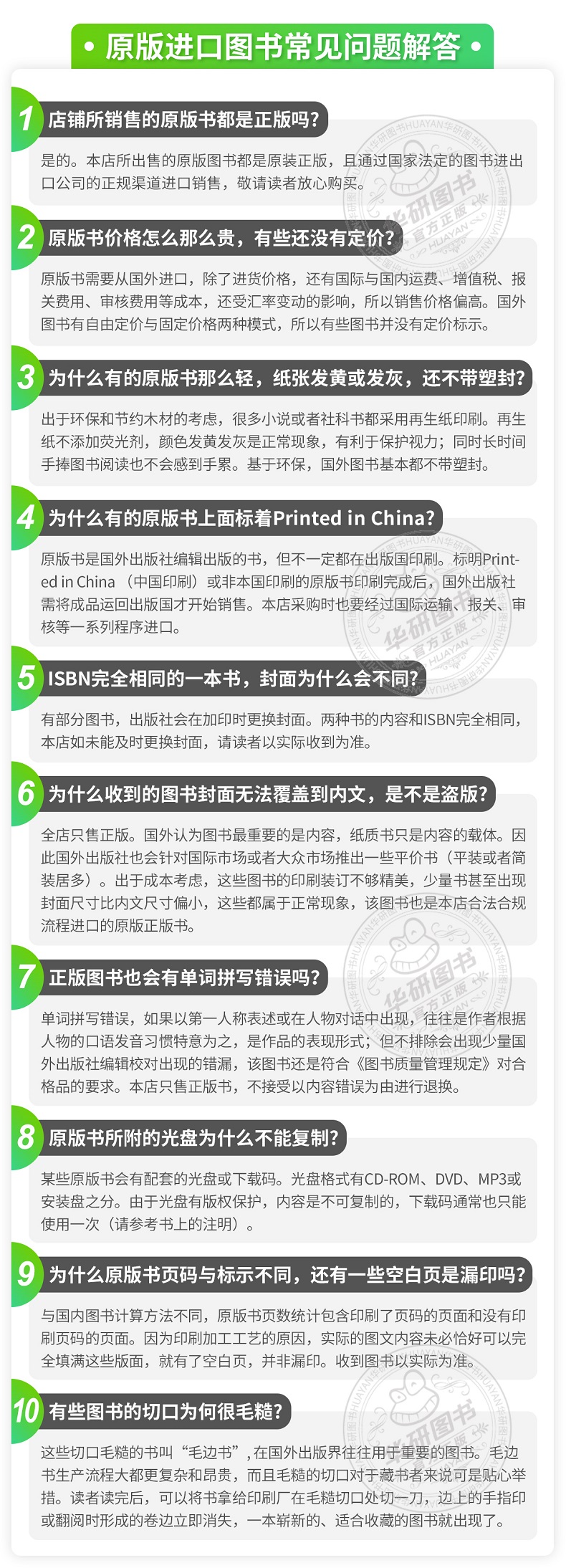
1234567
- 华研外语 (微信公众号认证)
- 本店是“华研外语”品牌商自营店,全国所有“华研外语”、“华研教育”品牌图书都是我司出版发行的,本店为华研官方源头出货,所有图书均为正规正版,拥有实惠与正版的保障!!!
- 扫描二维码,访问我们的微信店铺
- 随时随地的购物、客服咨询、查询订单和物流...
